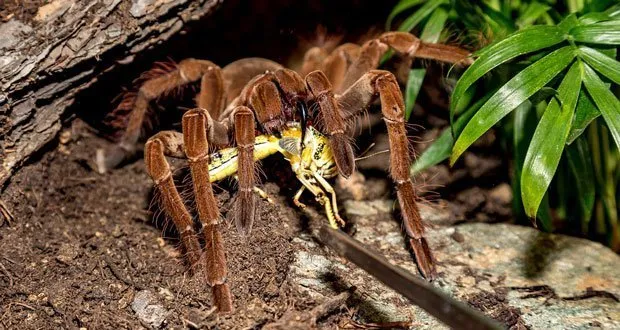What are Tarantulas
Tarantulas are large, hairy spiders belonging to the Theraphosidae family. These fascinating creatures are found in various habitats around the world, captivating both scientists and nature enthusiasts alike. Their imposing size, unique characteristics, and intriguing behaviors have made them a subject of extensive study and popular interest. Despite their often intimidating appearance, tarantulas play a crucial role in their ecosystems, helping to control insect populations and serving as a food source for other animals. This article delves into the captivating world of tarantulas, exploring their physical attributes, habitats, behaviors, and their relationship with humans, as well as addressing the conservation challenges they face.
Appearance and Physical Characteristics
Tarantulas are known for their impressive size and distinctive appearance. They typically have a hairy body, with long legs and two main body segments: the cephalothorax (fused head and thorax) and the abdomen. Their bodies are covered in fine hairs, which serve various purposes, including sensory perception, defense, and thermoregulation. The coloration of tarantulas varies widely, ranging from earthy browns and blacks to vibrant blues, oranges, and yellows, depending on the species and habitat. They possess eight eyes, though their vision is not as sharp as other senses, such as touch and vibration. Two large chelicerae, or fangs, are used for capturing prey and defense, and the pedipalps, located near the mouth, aid in manipulating food and sensing their environment.
Size and Color Variations
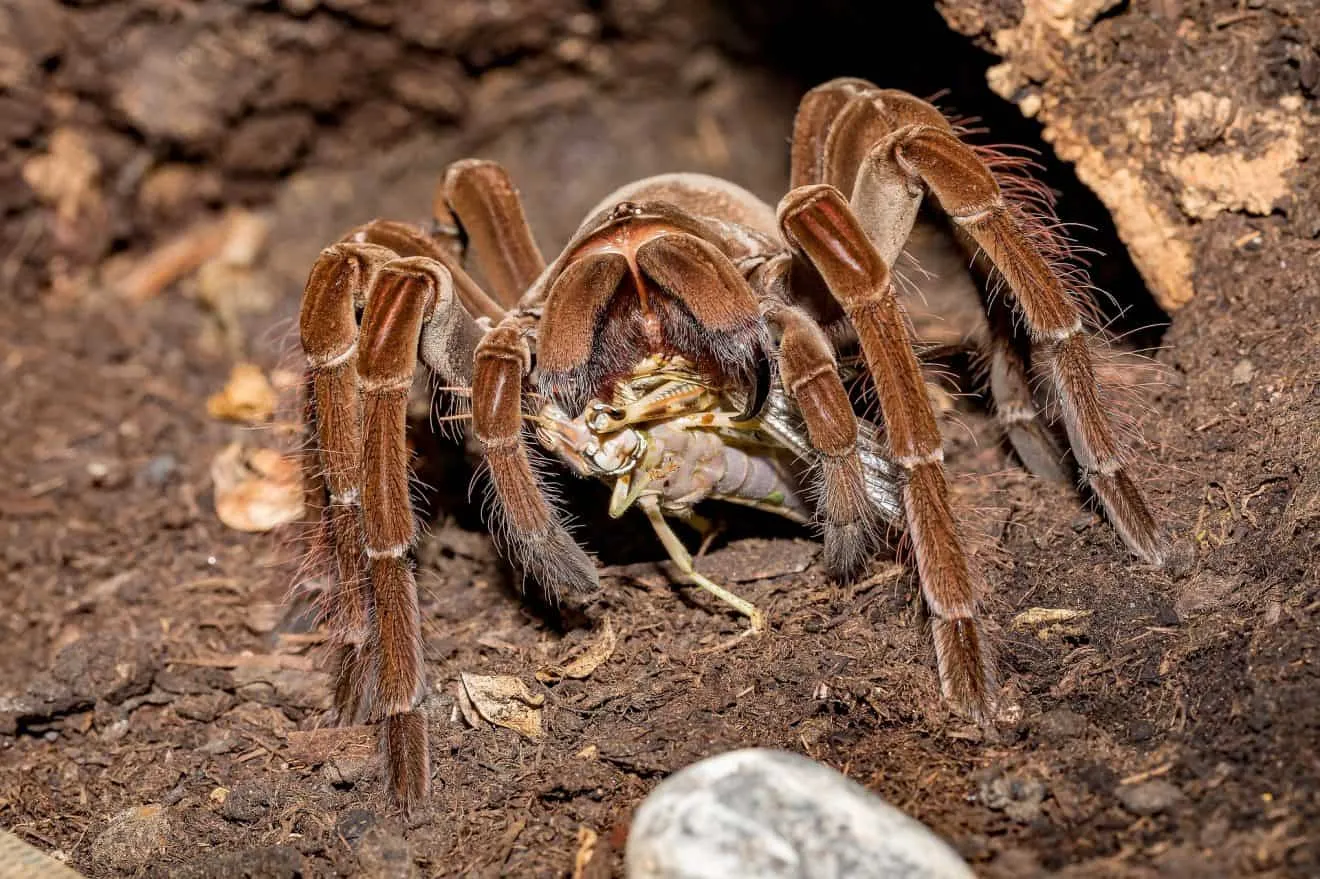
The size of tarantulas varies greatly depending on the species. Some, like the Goliath birdeater, can have a leg span of over 12 inches, making them among the largest spiders in the world. Others are much smaller, with leg spans of just a few inches. Color variations are equally diverse, with some species exhibiting cryptic coloration to blend in with their surroundings, while others display bright, contrasting colors as a warning to potential predators. The hairs on their bodies can also vary in texture and length, contributing to their unique appearance. These variations are often influenced by environmental factors, such as habitat type and climate, and play a crucial role in the tarantula’s survival and adaptation to its environment.
Habitat and Distribution
Tarantulas inhabit a wide range of environments, including tropical rainforests, grasslands, deserts, and even mountainous regions. Their adaptability has allowed them to colonize various parts of the world, with different species evolving to thrive in specific habitats. They are typically terrestrial, spending their lives on the ground, but some species are arboreal, living in trees. Their choice of habitat is often determined by factors such as temperature, humidity, prey availability, and the presence of suitable shelters like burrows, crevices, or foliage. Understanding their habitat is crucial for appreciating the diversity of tarantulas and the challenges they face in adapting to different ecosystems.
Where Tarantulas Live
Tarantulas construct or occupy various types of shelters depending on their species and habitat. Many species dig burrows in the ground, lining them with silk to provide stability and protection. Some create silk retreats under rocks, logs, or within vegetation. Arboreal tarantulas often reside in tree hollows or build silk nests in the branches. These shelters provide a safe haven from predators, a stable microclimate, and a place to ambush prey. The design and construction of these shelters reflect the tarantula’s adaptation to its environment, with features such as ventilation, moisture control, and camouflage playing important roles in their survival.
Global Distribution
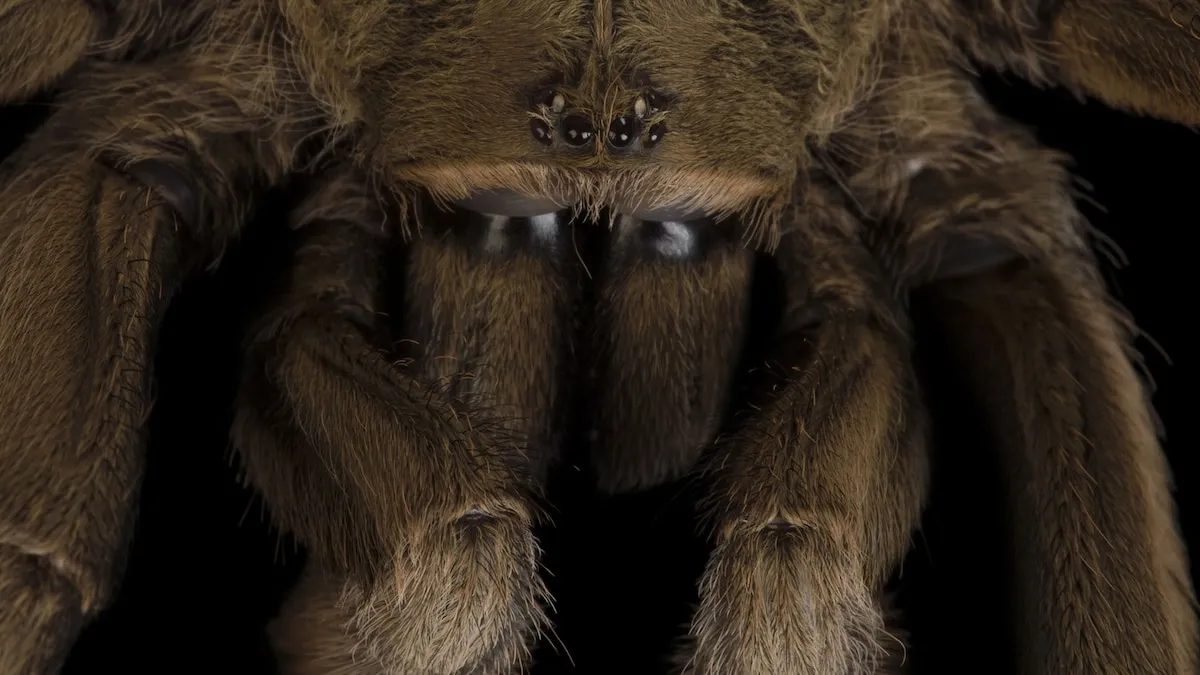
Tarantulas are found on every continent except Antarctica. Their global distribution is diverse, with the highest concentration of species in tropical and subtropical regions, particularly in South America, Central America, and Southeast Asia. They are also present in parts of North America, Africa, Australia, and Europe. The specific distribution of a tarantula species is influenced by factors such as climate, food availability, and the presence of suitable habitats. Understanding the global distribution of tarantulas helps scientists and conservationists assess their conservation status and develop strategies to protect them from threats like habitat loss and climate change.
Behavior and Lifestyle
Tarantulas are primarily nocturnal predators, though their activity patterns can vary depending on the species and environmental conditions. They spend much of their time in their burrows or shelters, waiting for prey to come within striking distance. They are ambush predators, relying on their excellent sensory abilities, such as detecting vibrations, to locate and capture prey. Their lifestyle is largely solitary, with the exception of mating and the period when females care for their eggs and spiderlings. Their behavior is often characterized by patience, precision, and a remarkable ability to adapt to their environment.
Diet and Hunting Strategies
The diet of tarantulas mainly consists of insects, but larger species may also consume small vertebrates such as lizards, frogs, and even small birds. They are opportunistic hunters, ambushing their prey with lightning-fast strikes. When a tarantula senses movement, it pounces on its target, injecting venom through its fangs to paralyze the prey. The tarantula then uses enzymes in its venom to begin breaking down the prey’s tissues, making it easier to consume. They use their chelicerae to crush the prey, effectively turning it into a liquid meal, which they then suck up. The hunting strategies vary slightly between species, with some actively pursuing their prey while others remain in ambush positions.
Predators and Defense Mechanisms
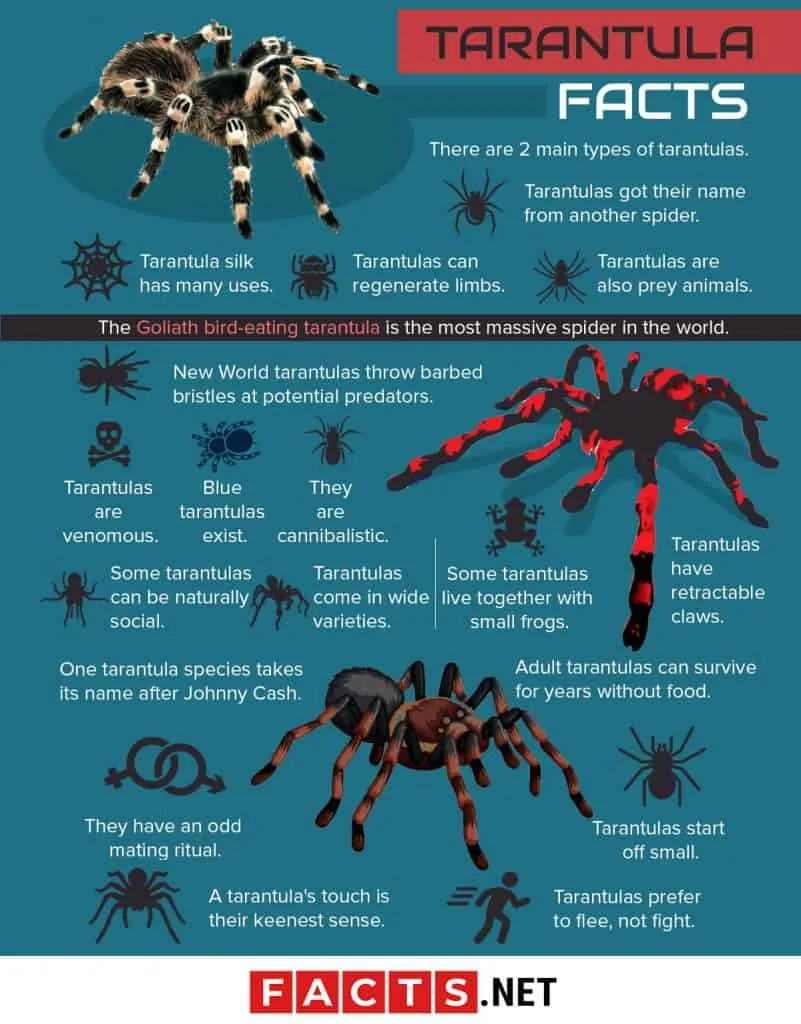
Tarantulas have several natural predators, including birds, snakes, lizards, and other spiders. To defend themselves, they have evolved various defense mechanisms. One common defense is the urticating hairs, which are fine, irritating hairs on their abdomen that they can flick at predators, causing intense itching and irritation. Some species also have the ability to bite, injecting venom, although tarantula bites are generally not life-threatening to humans. They may also exhibit defensive postures, such as rearing up and displaying their fangs. Their large size and imposing appearance also serve as a deterrent to some predators. The combination of these defenses helps tarantulas survive in a world full of threats.
Reproduction and Life Cycle
The life cycle of a tarantula is a fascinating process that includes mating, egg laying, and the development of spiderlings. Tarantulas undergo several molts throughout their lives, shedding their exoskeleton to grow. This process is essential for their development, but it also leaves them vulnerable to predators. The lifespan of a tarantula varies, with males generally living for a few years and females often living for a decade or more. Factors like environmental conditions and food availability influence their growth and lifespan. Understanding the reproduction and life cycle is crucial for the conservation of tarantulas and for the responsible breeding of these animals in captivity.
Mating Rituals
Mating in tarantulas involves elaborate courtship rituals. Male tarantulas typically approach the female’s burrow and engage in a series of behaviors, such as drumming on the ground or displaying their pedipalps, to signal their interest. They must approach cautiously, as females may view them as prey. The male deposits sperm webs and uses his pedipalps to transfer sperm to the female. If the female accepts, she will allow the mating to occur. After mating, the male typically retreats to avoid being eaten by the female. Mating rituals vary depending on the species, but they all serve the purpose of ensuring successful reproduction.
Egg Sacs and Spiderlings
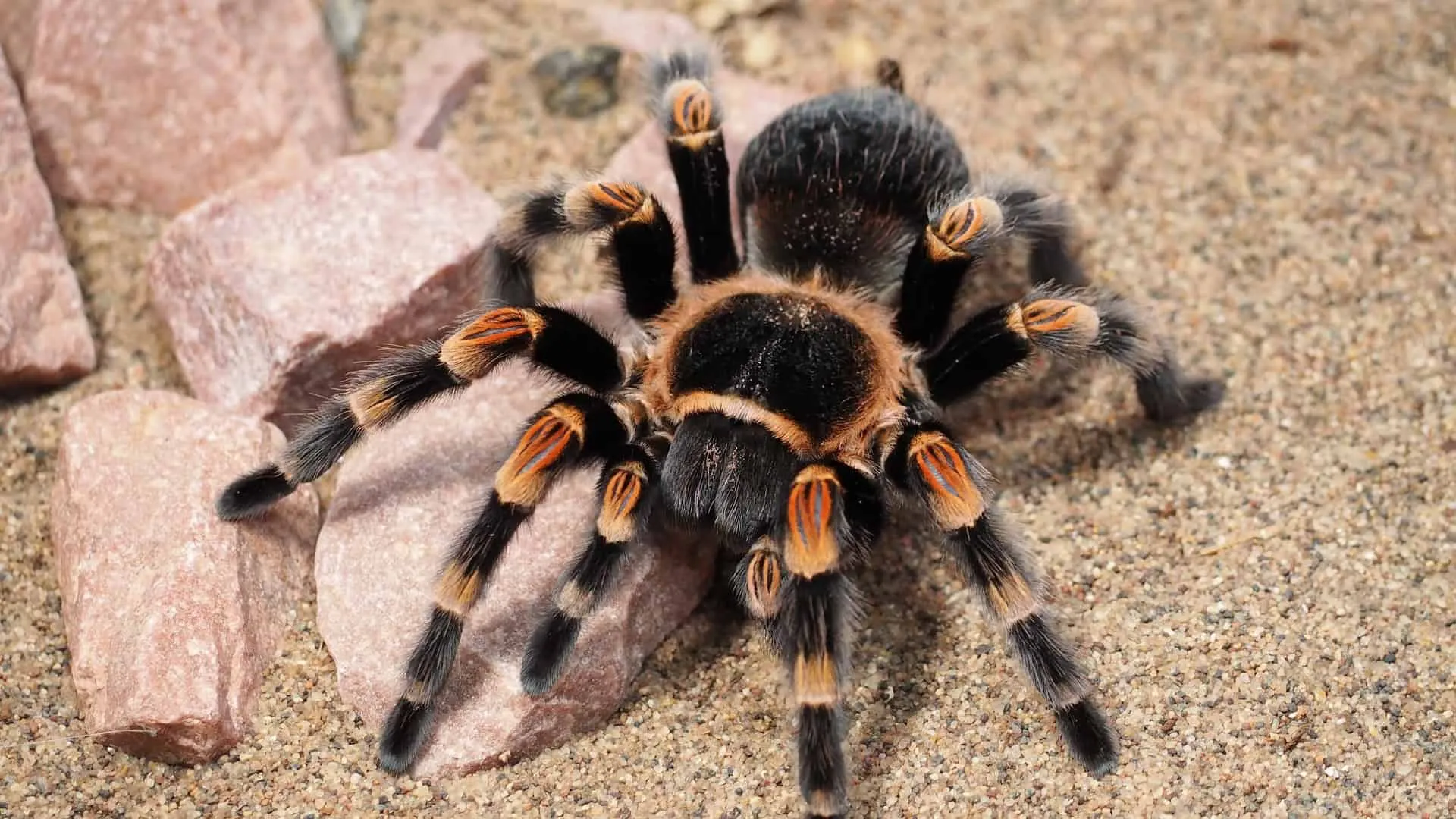
After mating, the female tarantula lays her eggs and encases them in a silk egg sac, which she often guards diligently. The number of eggs in the sac can vary greatly, depending on the species and the size of the female. The female will often turn the egg sac to ensure even development. After several weeks, the eggs hatch, and the spiderlings emerge. The spiderlings initially remain with the mother, undergoing their first molts. They gradually disperse, becoming independent. The entire process, from mating to the emergence of spiderlings, is a testament to the resilience and complexity of tarantula life.
Tarantulas and Humans
Tarantulas have a complex relationship with humans, ranging from fear and fascination to scientific study and the pet trade. Despite their often intimidating appearance, most tarantulas are not aggressive and rarely bite humans unless provoked. However, their size and the potential for an irritating bite can still cause concern. Their role in popular culture, including films, literature, and art, has contributed to both the fear and allure associated with these spiders. Education about tarantulas, including accurate information about their behavior and care, can help reduce fear and promote a better understanding of these incredible creatures.
Tarantulas as Pets
Tarantulas are popular pets for many people, due to their relatively low maintenance needs and fascinating behaviors. Keeping a tarantula as a pet requires careful consideration, including providing a suitable enclosure, maintaining the appropriate temperature and humidity levels, and offering a proper diet. Responsible pet ownership includes researching the specific needs of the species and providing enrichment to promote the animal’s well-being. They are generally not social creatures and should be housed individually. A well-cared-for tarantula can bring years of enjoyment to its owner, and there are many resources available to help owners provide the best possible care.
Handling and Care
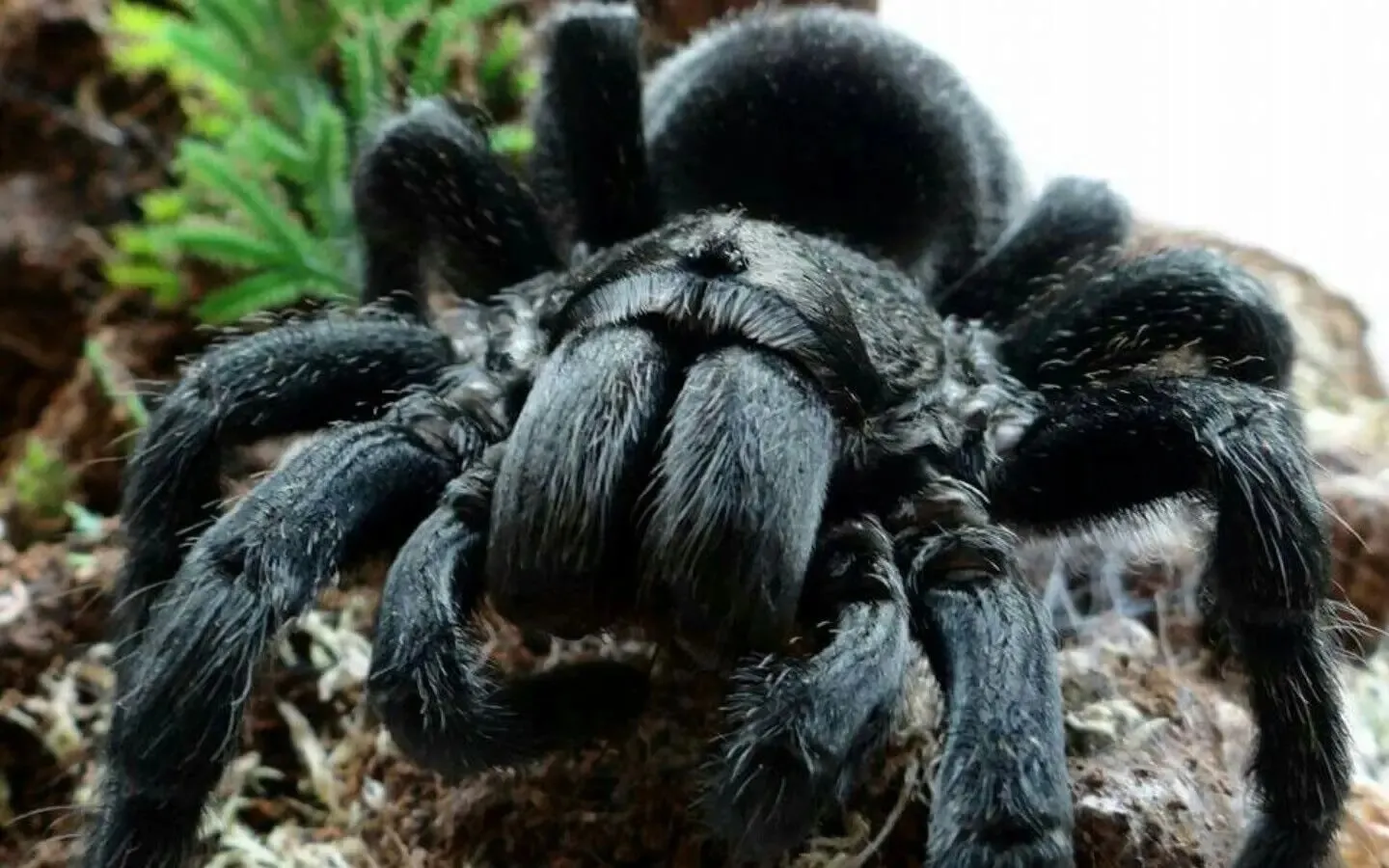
Handling tarantulas should be done with care and caution. While most species are not aggressive, they can bite if they feel threatened. It is generally recommended to avoid handling tarantulas unnecessarily. If handling is required, it should be done gently and close to the ground to prevent injury if the spider falls. Providing the correct habitat conditions, including appropriate temperature, humidity, and substrate, is crucial for their health. Regular feeding and providing fresh water are also essential. It’s also important to familiarize yourself with the specific needs of the species you are keeping, as care requirements can vary.
Common Health Issues
Tarantulas, like all living creatures, can be susceptible to health issues. Common problems include dehydration, fungal infections, and parasites. Providing the correct environment and diet can help prevent these issues. Signs of illness include lethargy, loss of appetite, and unusual behavior. Regular monitoring and observation are essential for identifying potential problems early. It is best to consult a veterinarian experienced in exotic animals for advice on diagnosing and treating health problems. Quarantine new tarantulas to prevent the spread of any diseases.
Tarantulas in Culture
Tarantulas have played a role in human culture for centuries, often representing fear, mystery, and the unknown. They have been featured in folklore, mythology, and literature, often depicted as menacing creatures. In some cultures, they are viewed with reverence and are integrated into local traditions. In others, they are seen as symbols of danger and foreboding. Their presence in popular culture, including films, television, and video games, has contributed to both the fear and fascination surrounding these spiders. Despite their often negative portrayal, they also represent the diversity and complexity of the natural world.
Myths and Misconceptions
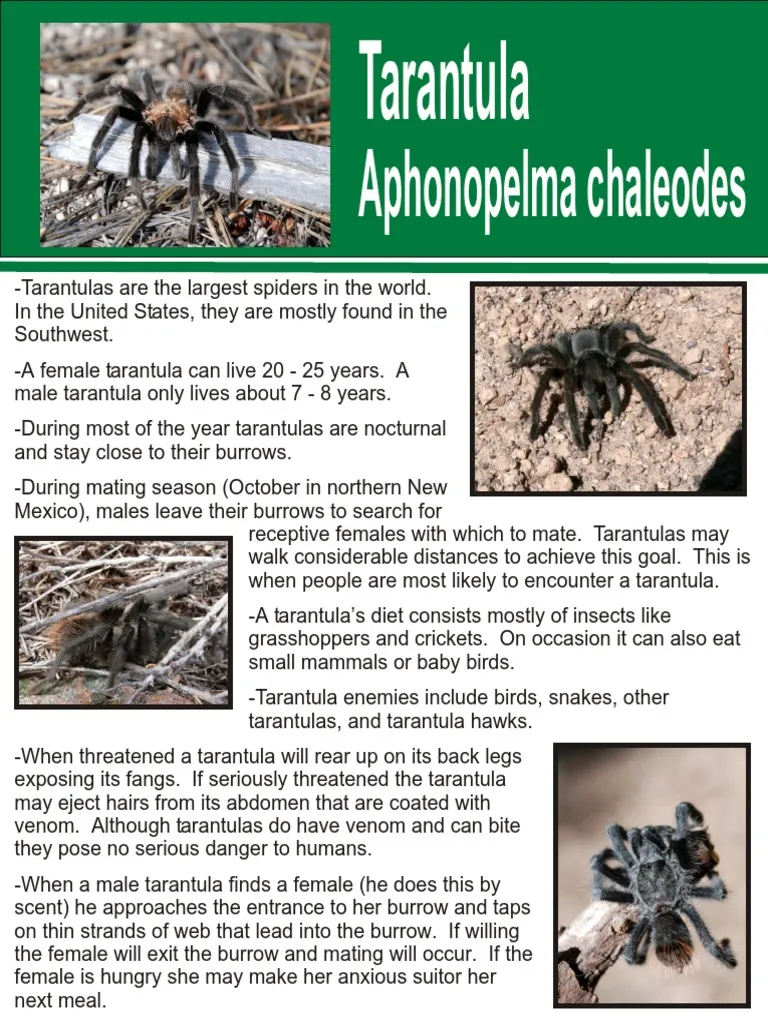
Several myths and misconceptions surround tarantulas. One common myth is that they are highly aggressive and will attack humans. In reality, most tarantulas are not aggressive and prefer to avoid confrontation. Another myth is that their bites are highly venomous and deadly. While their bites can be painful, they are generally not life-threatening to humans. Other misconceptions include that they are always covered in venom or that they have poor eyesight. Understanding and dispelling these myths is crucial for promoting a more accurate and informed perception of tarantulas. Education about their behavior, venom, and care can help eliminate fear and promote appreciation for these fascinating creatures.
Conservation Status
The conservation of tarantulas is increasingly important as they face threats from habitat loss, the pet trade, and climate change. Many species are vulnerable to these pressures, highlighting the need for conservation efforts to ensure their survival. Conservation strategies include protecting their natural habitats, regulating the pet trade, and raising public awareness. By understanding the threats they face and supporting conservation initiatives, we can help protect these remarkable creatures and the ecosystems they inhabit.
Threats to Tarantula Populations
Tarantula populations face several threats, including habitat loss due to deforestation, urbanization, and agricultural expansion. The pet trade, especially unregulated collecting, can also put pressure on wild populations. Climate change and the changing climate conditions can impact tarantula habitats and food sources. Other threats include the use of pesticides, which can harm tarantulas and their prey. Addressing these threats requires a combination of habitat protection, sustainable practices, and public awareness. Recognizing the interconnectedness of these threats is crucial for developing effective conservation strategies.
Conservation Efforts
Conservation efforts for tarantulas include habitat protection, such as establishing protected areas and managing existing habitats sustainably. Regulating the pet trade through permits and breeding programs can help reduce pressure on wild populations. Educating the public about tarantulas and their importance in ecosystems is vital for generating support for conservation efforts. Scientific research is also essential for understanding tarantula biology, behavior, and threats, which can inform effective conservation strategies. By collaborating across various disciplines, it is possible to ensure the long-term survival of these amazing creatures and protect the ecosystems they inhabit. Supporting conservation organizations and initiatives plays a crucial role in their protection.
